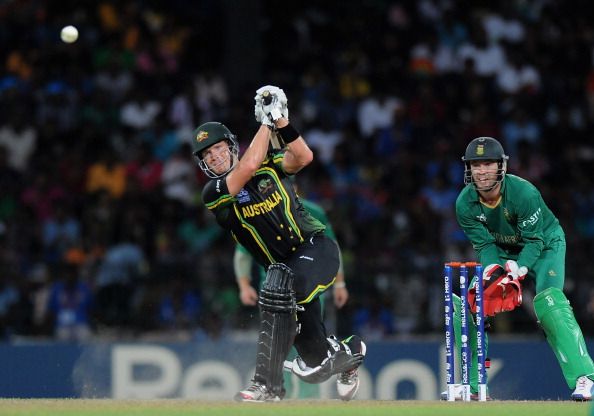
Has the real Shane Watson finally arrived?

The advent of T20 cricket has revolutionized the way the game is being played all over the globe. Admittedly, there’s much less international T20 cricket on show than ODIs, yet there is an overwhelming amount of ‘domestic’ T20 leagues around. So much so, that it needs to be recognized as a parallel cricket-verse, with a galaxy of its own stars: some familiar, some brand new. The first T20 World Cup may be thought of as a prelude to the big bang: IPL-2007. Arguably, one of the first superstars to be born out of IPL 2007 was Shane Watson.
Before the IPL, Watson had been around for the best part of a decade, looked upon as a talented cricketer who could achieve something, if only he could manage to stay fit for any considerable length of time. There had been flashes of brilliance before, but the mentorship of his Hampshire teammate Shane Warne sparked off an evolution of Shane Watson, the all-round cricketer. He was the mainstay of the Rajasthan Royals‘ batting and bowling, emerging as a force to be reckoned with along the way to their IPL championship. It earned him a call up to the Australian side, and his international career hasn’t looked back since, but there was still something left wanting. There were good series, average ones, injuries, but Watson had been in ominous form going in to the 2011 ODI World Cup, smashing attacks all over the park in the lead up. The single handed demolition of Bangladesh in Bangladesh, where he had scored 185 with 15 sixes was a scary show of dominance, but he somehow failed to deliver when it really mattered: in the World Cup. That big announcement of arrival on the international stage was still missing.
That was until the 2012 T20 World Cup in Sri Lanka. Watson’s 2012 world Cup performances can be compared to Lance Klusener’s 1999 World Cup. Both men seemed nigh invincible with the bat, as they carried their respective teams through the preliminary stages of the tournaments. Both more than played a role with the ball, claiming crucial wickets. Both saw their teams crash out in the semi finals, and yet, both held the Man of the Series trophies at the end of the tournament. But most importantly, both players established a reputation along the way. Watson’s role with the bat is more of a set-up artist, while Klusener specialized as the finisher. Watson’s forte is clean, powerful through-the-line hitting off the front foot with a touch of class, while Klusener would be one to bludgeon almost anything dished up to him with raw power. And that extra bit of class that Watson exudes with the bat is what elevates him beyond Klusener.
Shane Watson’s T20 World Cup stats read: 249 runs at an average of 49.95, and 11 wickets at an average of 16.9 over 6 matches. Seriously good figures for any series. More so, because of the role he played in his team. Watson, along with David Warner and Michael Hussey, was tasked with the responsibility of being the gatekeeper who guards the brittle citadel. Australia’s middle order was inexperienced at best, and soft targets for the opposition attacks, at worst. The complete dominance shown by Watson and Warner at the top meant that the Australian middle order was never exposed throughout the tournament, with Shane Watson scoring one-third of Australia’s total runs in the tournament.
The Shane Watson playing in the world Cup was a completely transformed player as compared to the one who turned up for Australia against Pakistan in the series leading up to the tournament. There was a return to form, playing a role, normal cricketer, and suddenly when the Aussies landed in Sri Lanka, we saw a player hungry to stamp his authority on a grand stage, eager to make up for the lost opportunities of years gone by. It translated into four consecutive Man-of-the-Match performances through the group stages, and the Super-8s, and the deserved Man-of-the-Series crown, even though Australia didn’t make it past the semi final stage.
Australian cricket needs this Shane Watson to become the cornerstone of their rebuilt side. T20 is an all-rounder’s game, and someone who can win a place in the side both as a batsman and as a bowler is a precious asset. Watson is now proving to be that asset for Australia. It is natural for comparisons with Jacques Kallis to have come up, but even Watson would know that there’s much to do, much to show yet to consider himself part of that league. He’s certainly getting there, but the journey is still incomplete.